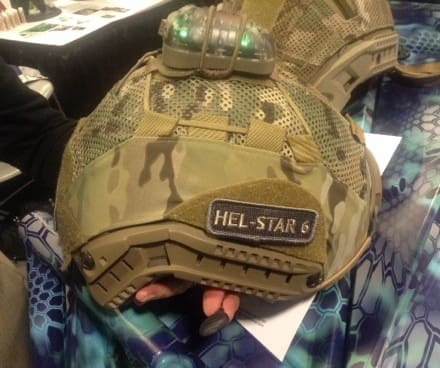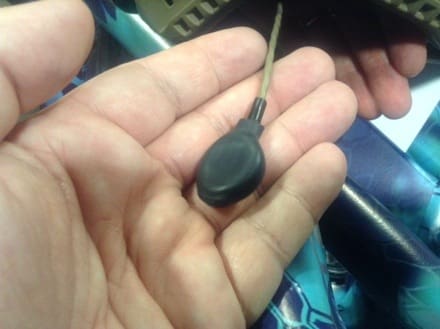The new HEL-STAR F2 is a indent iffy friend or foe light system. Based on the footprint of the HEL-STAR 6 strobe, it consists of a field programmable strobe light and User Feedback Module Buzzer Pad. The UFM is attached by a removable cable to the strobe and when the strobe is interrogated by an IR laser, the UFM buzzes giving a silent, yet tactile alert. That let’s you know that friendlies are in the area. In testing, the system has detected IR Lasers at 800m. The UFM can be placed anywhere in the helmet for comfort.
Tags: Core Survival, SOFIC 2014




So, the strobe goes on my head. And IR lasers are usually mounted on weapons. Doesn’t that mean that if my buzzer goes off a friendly just pointed the business end of their gun at my head?
Please enlighten me if I am looking at it wrong.
In a broad sense, yes.
There is an IFF implication as well as a health implication.
IR lasers irradiate just as much as VL spectrum lasers.
You are correct. Guess what, it happens.
“Buzz” You just got free LASIK.
You aren’t wearing LEP?
Is that a serious question? No one’s wearing it.
I wasn’t worried about the laser and my eyes. Although that would be something additional to look at. I am concerned about the bullets that come out of the firearm.
My initial use case had folks on the ground illuminating other “good guy” strobes to let them know they were in the area. Kind of a “Hey there is a dude on our team over there. I should point my laser at his head so his helmet buzzes and he knows I have his back.”
But, pointing a weapon at someone for ID purposes is dumb. That is why head mounted NODs are usually better than weapons mounted ones, and a hand light is often advocated for searching over a gun light and so on. That is why we still make and issue binoculars instead of just using our scopes all the time.
You might not have your strobe on.
This looks more like one of those “good idea, poor execution” concepts for kit. That thing is ridiculously over-sized compared to other modern, helmet-mounted strobes for what amounts to very little real tactical gain. If you are being lazed for targeting, then you are almost certainly going to be under NVGs and be able to see it, or someone next to you will see it. To be on the wrong end of a SOFLAM, or that new crappy pistol-looking laser device for laser guided bombs during the day time would require a horrendous lack of situational awareness and piss poor coordination. This is something only gear junkies will buy.
….or inexperienced free-fall guys who are told to put together a purchase request for end of year funds.
You are correct!
I’m more interested in that cool looking kryptek style camo under the helmets… what’s that?
Pretty sure it’s Kryptek Pontus, one of the new hunting patterns that came out. For spearfishing?
It is
Nevermind, I fell victim to the “ask questions first and look up answers afterwards” syndrom. That’s kryptek pontus FWIW… most definitely useless for me, but still pretty stylish
The funny thing is that when I first showed this pattern during SHOT Show, everyone talked badly about it.
ah! Thx Eddie, looks like you were faster than my retarded self!
The only thing I can see this not being a terrible idea is a CAS type role. If you helmet starts buzzing, you need to call the JTAC and have them move the designator so you don’t get hellfire’d or JDAM’d in the face. But if you have a strobe the JTAC should be able to see it and should not be pointing the designator at you in the first place. That is a big part of why we use strobes in the first place.
This is assuming that friendlies are the only ones with IR lasers.
It puts the onus on the “target” to be aware they have a weapon aimed at them. And seek cover.
There have been systems tests which “interrogate” potential targets and provide a return signature to verify friend or foe to the shooter/ gunner, based on sometype of transponder or RF tag.
So the trigger doesn’t get pulled.